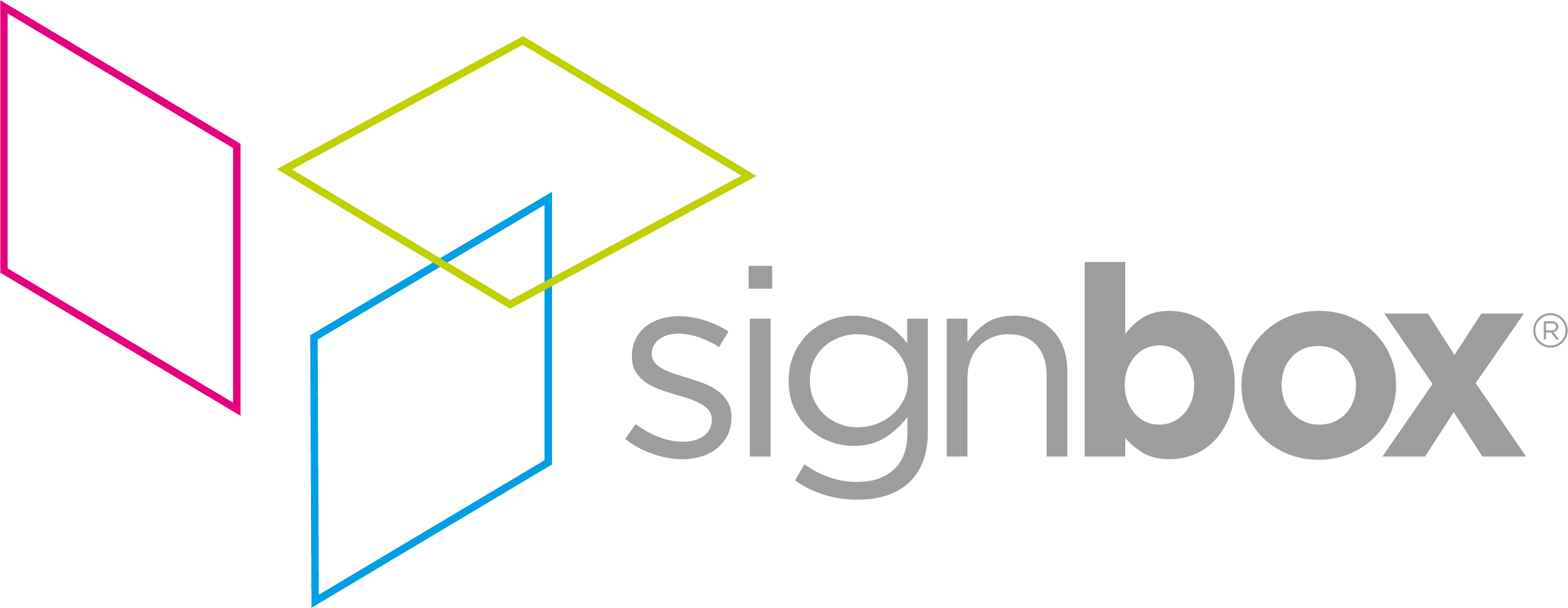It’s not just about vinyl!
Signbox’s creative team discussed the steps designers within the signage industry can take to become more sustainable. Here’s their perspective on this hugely important topic.
How can designers within the sign industry be more sustainable?
There are many areas to consider when trying to be more sustainable and, contrary to popular belief, it’s not just vinyl that we need to take a closer look at.
So, what are the hot topics when it comes to sustainability for Signbox? Well, we’re certainly finding more and more sustainable hard materials that are hitting the right specifications for sustainability in signage. For example, we’re manufacturing bamboo signage and wayfinding, solar powered signage and utilising the magnificent range of FSC and Green Guard accredited materials that are now available. We’re also printing with Green Guard inks and using sustainable water-based pastes too – as it’s not just the materials, but the whole system that needs to be considered if you’re really going to strive for your eco credentials.
There are excellent sustainable options for glass manifestation projects, such as the Lintec optically clear film. It’s a fantastic alternative to clear PVC vinyl. Polyester also has very low VOCs (volatile organic compounds) so it’s less harmful to the environment, it can be recycled and will conform to the BRE assessment where PVC will not. From a nonenvironmental point of view, a polyester film is more durable, easier to apply and the clarity of the film and print quality is far superior to clear PVC.
At Signbox we have begun to make steps to evaluate our company’s carbon output to understand where we need to make changes. It’s about becoming more accountable and putting things in place to offset that carbon output so we can become a more responsible and sustainable company. This includes re-evaluating ourselves and our supply chain and taking a closer look at all the materials we are using.
We’re finding that manufacturers are now offering more comprehensive alternatives to single-use PVC, such as CMYUK’s Eco range, which is made from recycled PET and offers a viable alternative to PVC vinyl and PVC banner.
So why is cheap PVC vinyl still specified?
The big question then is why is cheap PVC vinyl still specified and used so often if all these viable alternatives are available? In truth, it’s probably because of the cost. Some companies are simply not willing to pay more for their graphics, but what cost will this be to our planet?
We’re currently experiencing a PVC waste crisis and there is some 150 million tons of long-life PVC materials in existence globally. Greenpeace has found that PVC recycling is less than 1% of consumption. According to independent research, recycling is not even an option for 70-85% of PVC waste. This means that hundreds of thousands of tons of PVC is destined to become waste soon, creating a seemingly never-ending disposal problem.
There are toxic chlorine-based chemicals contained within the PVC that are released when disposing of PVC – so these harmful chemicals are building up in our water, air and food chain, damaging our health and the planet.
There’s simply no excuse. It’s our responsibility to think more carefully about the materials we use, be accountable and try to find alternatives wherever possible.
Even though we understand the damage PVC is causing to our planet it is still too widely used within the signage industry and construction industry as a whole. We must scrutinise our supply chains and materials and commit to sourcing more responsibly.
PVC is not the only culprit
However, it’s not just PVC that is the problem. There are many other areas we need to consider within the signage scheme to be more sustainable. For example, it’s imperative to consider the lighting you’re using and how this will affect your carbon footprint. Solar electricity is green renewable energy and doesn’t release any harmful carbon dioxide or other pollutants. Add to that the use of LEDs within the industry, which has had such a positive impact. LED lighting provides many environmental advantages, including energy efficiency, production of zero toxic elements, less requirement for light fixtures and a longer life span. Remember, traditional fluorescent strip lights contain toxic chemicals, such as mercury and, when disposed of in landfill, they’ll contaminate our environment.
The takeaway here is that it’s all our responsibility to make these changes so our industry can become more environmentally conscious and sustainable. As the truth hits home and we now appreciate the huge environmental impact and health implications of our excessive use of PVC and the construction industry causes, we must all do more to make positive changes.
Want to find out more? To talk about how your signage can be more sustainable please contact us at sales@signbox.co.uk.


